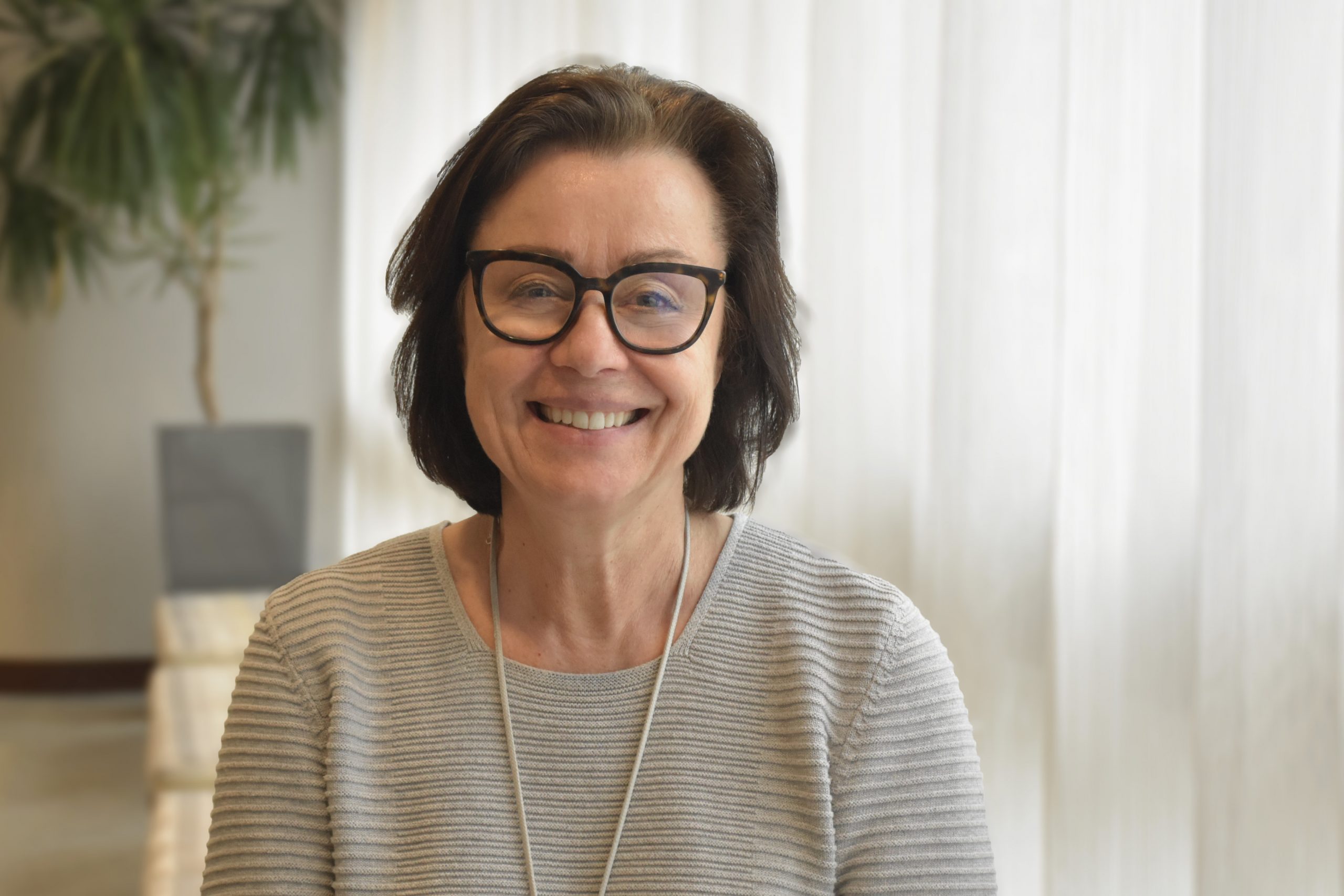Dr. Dianne Chadwick joined the Ontario Tumour Bank with more than a decade of experience in biobanking.
Biobanks like the Ontario Tumour Bank (OTB) have become indispensable to cancer research, supplying the plasma and tissue samples scientists are using to make the next generation of discoveries. And Dr. Dianne Chadwick thinks that role will continue to grow as OTB collects even more diverse samples, offers even more advanced services, and builds even stronger relationships with clinicians and researchers.
Chadwick joined OTB as Associate Director in October 2022 after more than 10 years working in biobanks at the University Heath Network and Sunnybrook Health Sciences Centre. With a PhD in Medical Biophysics and fellowship training in clinical laboratory genetics, she brings a strong understanding of the clinical side of hospital operations and appreciation for the needs of research.
In a recent interview with OICR News, Chadwick talked about her excitement for her new role and her goals for the future of OTB.
What made you want to take this role at OTB?
I’ve known about OTB for many years now. In the biobanking community, OTB is known for the quality of its samples and its procedures. Being associated with a world-class research institute like OICR is another huge asset. When the Associate Director position at OTB came available, I saw it as an opportunity to contribute to biobanking on a larger scale with a province-wide organization.
In your view, what is the role of biobanking in the research community?
I think biobanking can be a bridge between clinicians and researchers. Both sides are under tremendous pressure. With the demands of caring for patients, it’s impossible for clinicians to know the details of every research study being performed in their hospital. And if researchers don’t have clinical experience, they may not fully appreciate the challenges of approaching a very sick patient and asking for them to participate in a research study. As a biobank, I think our role is to support clinicians and researchers as much as possible with patient sample collection and distribution, taking as much as we can off their plate so that both sides can get on with their extremely valuable work.
Why is OTB well placed to be that bridge?
OTB is unique because it is part of OICR, which is focused specifically on cancer research. Because of that, we tend to be quicker with contracts and legal agreements than other biobanks. There are so many regulatory hurdles in clinical research, from ethics approvals to material transfer agreements, and they can take a long time. With access to OICR’s legal expertise, OTB can turn these agreements around quickly so that studies – and innovations – can move forward. We can also provide researchers with expert advice on submissions to regulatory agencies, for instance.
Being part of OICR also means we have access to its many outstanding programs. For example, if a researcher wants to do genomics assays at the same time as receiving samples from us, we can send those samples to have DNA extracted by OICR’s excellent Tissue Portal and then have sequencing done by a OICR’s world-class genomics lab.
What else can OTB offer the research community?
It all starts with having excellent samples, and our claim to fame is our high-quality surgical tissue and associated blood samples from patients with cancer. We look forward to expanding the diversity of our samples through our new collection site at Unity Health. That site sees a lot of patients with brain tumours, which is a type of cancer we haven’t had much access to up to this point. We are also in a strong position to meet the increasing demand for fresh tumours, which are collected and sent to the research lab on the same day.
We know the needs of researchers are evolving, so we are adding new custom services to meet those needs, including prospective tissue and blood collection that is tailored to the specific needs of researchers. We are also just launching a new information management system that’s going allow us to better meet research requirements, particularly the needs of data, which we see as a big area of growth for us.
What excites you most about the future of OTB?
OTB celebrates its 20th anniversary in 2024, and I think there’s a lot to be excited about as we enter our third decade. Researchers are on the cusp of major advancements in preventing, diagnosing and treating cancer, and OTB is playing a huge role. Our plasma samples are helping develop the tools for liquid biopsies that will transform cancer screening, our histology slides are informing machine learning tools for precision diagnostics, and our tissue samples are being harnessed to predict how tumours will respond to next-generation therapies. We are also working to strengthen the province’s biobanking community by creating the soon-to-be-launched Association of Ontario Tumour Banks. Together with researchers and clinicians, we are going to be partners in many big discoveries down the road, and that makes me very optimistic for OTB’s future and the future of cancer care.
For more information visit the Ontario Tumour Bank website or contact OTB at tumourbank@oicr.on.ca.

